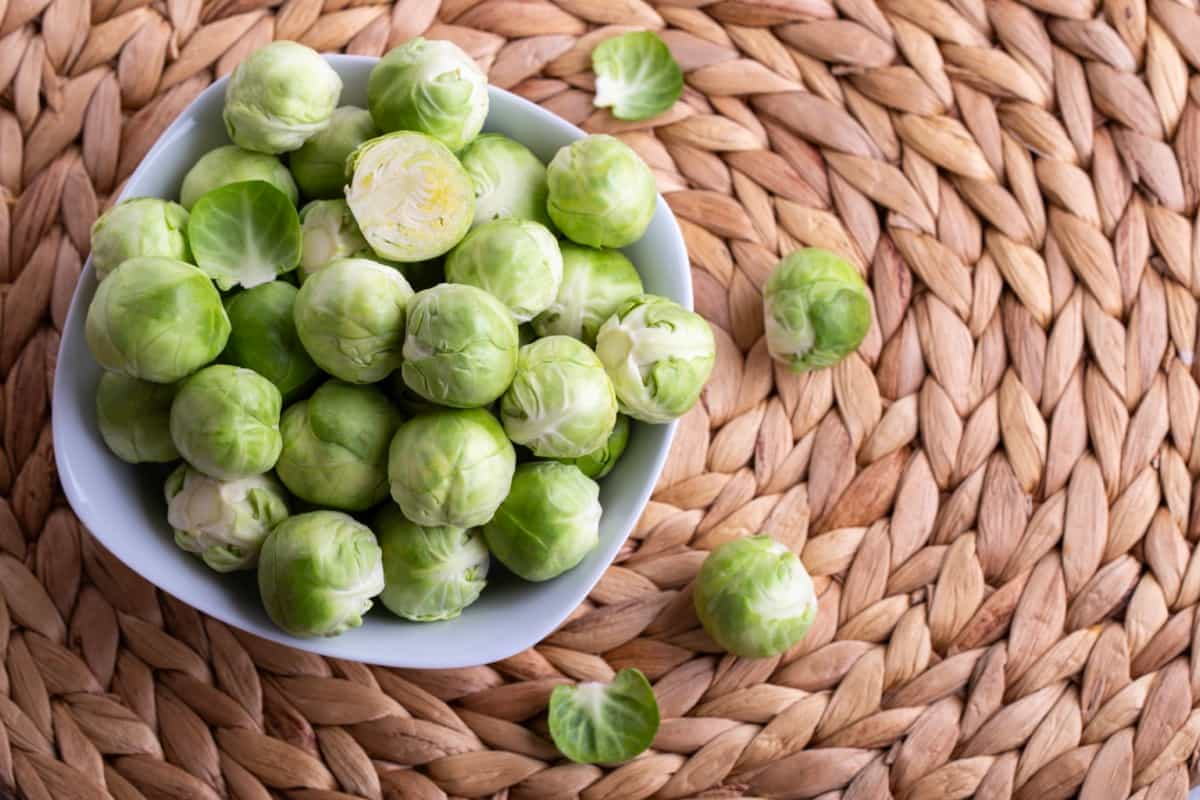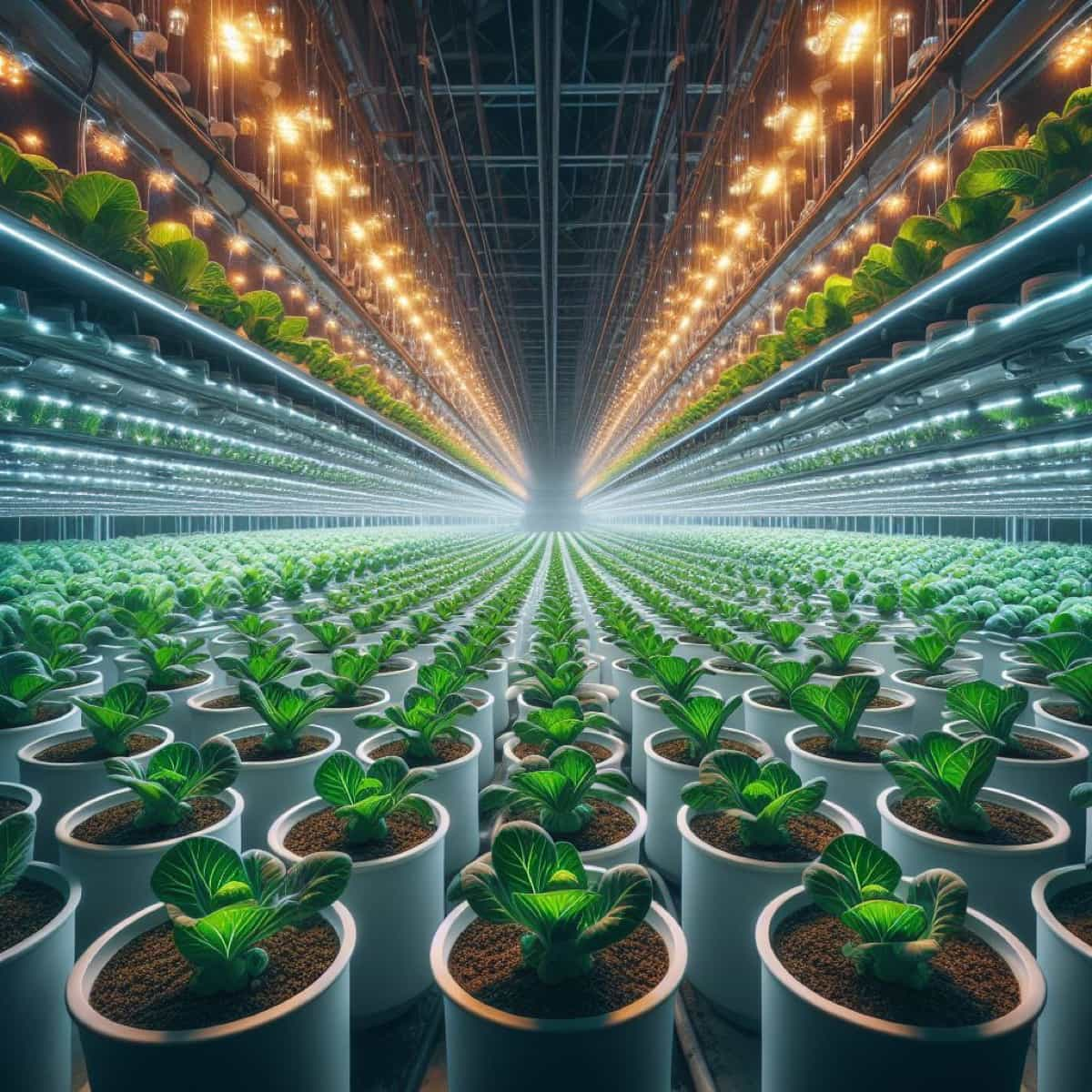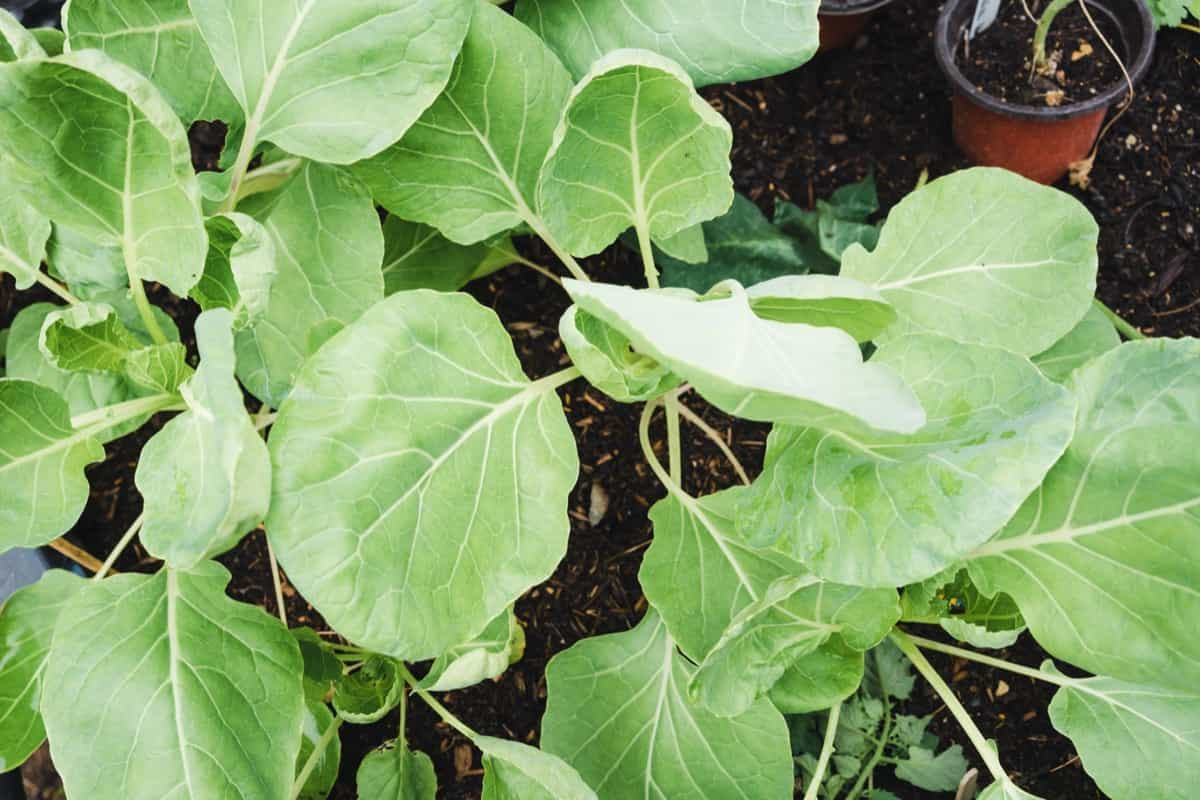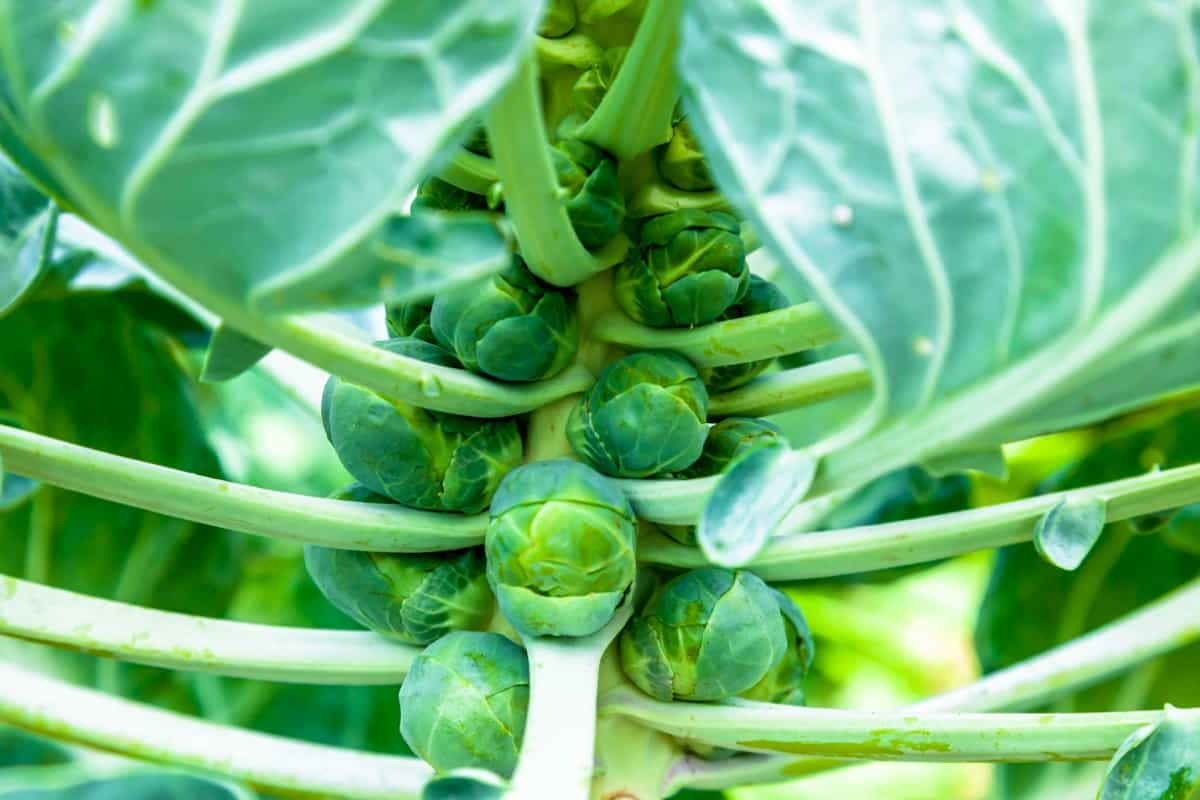Growing Brussels sprouts in a greenhouse can be rewarding, especially for beginners. This article guides you through the process, from selecting the right variety to managing the environmental conditions within your greenhouse. Whether you’re looking to grow Brussels sprouts in winter, start from seed, or cultivate them in pots, understanding their growth stages and addressing potential growing problems is key. We’ll explore how tall Brussels sprouts grow and the best practices to ensure a healthy, bountiful crop.

How to Grow Brussels Sprouts in Greenhouse
Ideal Growing Conditions for Brussels Sprouts in a Greenhouse
For successful growth, Brussels sprouts require specific conditions in a greenhouse. They thrive in well-drained, fertile soil with a pH between 6.0 and 7.0. The optimal temperature for Brussels sprouts falls between 45°F and 75°F, and they thrive with plenty of sunlight. Maintaining consistent soil moisture without overwatering is crucial, as Brussels sprouts are susceptible to root diseases in overly wet conditions.
Frequent surveillance for pests and diseases is crucial, as they can rapidly propagate within the limited confines of a greenhouse. Adequate spacing between plants is also important to ensure air circulation and reduce disease risk.
Choose the Right Variety of Brussels Sprouts for Greenhouse Cultivation
Selecting the right variety of Brussels sprouts is crucial for greenhouse cultivation. Look for varieties known for their hardiness and ability to thrive in confined spaces. Some varieties are specifically bred for greenhouse environments and may offer better disease resistance and yield.
Consider these varieties: ‘Jade Cross’ and ‘Long Island Improved,’ known for their compact growth and disease resistance, suitable for greenhouse environments. ‘Churchill’ and ‘Redarling’ are also excellent choices, offering early maturation and unique color, which are ideal for diverse greenhouse conditions. When choosing seeds, consider the maturity time and size of the plants, as some varieties may grow larger than others. Selecting varieties with different maturity times to extend the harvesting period is also beneficial.
Prepare the Greenhouse Environment for Brussels Sprouts Growth
Preparing your greenhouse environment is key to growing Brussels sprouts successfully. Start by sterilizing the greenhouse to eliminate potential pathogens. Ensure that the soil is well-aerated and rich in organic matter. If growing in pots, choose containers at least 12 inches deep and wide, with adequate drainage holes. Position your greenhouse to maximize sunlight exposure, which is essential for Brussels sprouts’ growth. Install a reliable ventilation system to regulate temperature and humidity, and consider adding grow lights if natural sunlight is insufficient.
In case you missed it: How to Prepare the Soil and Plant Brussels Sprouts

Plant and Transplant Brussels Sprouts in a Greenhouse Setting
Plant Brussels sprouts in a greenhouse by sowing seeds in seed trays or small pots. After the young plants have grown a few mature leaves, you can move them to bigger pots or plant them directly in the greenhouse soil. When transplanting, handle them gently to avoid harming the roots.
Ensure a distance of 18 to 24 inches between each plant to allow for proper growth. Using mulch around the plants will assist in keeping the soil moist and preventing weed growth. As the plants grow, staking may be necessary to support their height and weight, especially for taller varieties.
Provide Adequate Watering and Nutrient Management for Brussels Sprouts
Watering and nutrient management are crucial for the growth of Brussels sprouts. They require consistent moisture, so regular watering is essential. However, avoid waterlogging the soil, as this can lead to root rot. Implement a balanced fertilization regime, providing a high-nitrogen fertilizer during the early stages of growth to encourage leaf development, followed by a balanced N-P-K (Nitrogen-Phosphorus-Potassium) fertilizer as the plants mature. Regularly check the soil pH and adjust it to maintain optimal growing conditions.
Manage Temperature and Humidity Levels in the Greenhouse for Brussels Sprouts
Managing temperature and humidity is vital for Brussels sprout’s growth in a greenhouse. Maintain a consistent temperature range, ideally between 45°F and 75°F. During the day, ensure the greenhouse doesn’t get too hot, as high temperatures can stunt growth or cause bolting.
At night, temperatures can drop slightly but should not fall below 45°F. Humidity levels should be monitored and controlled to prevent fungal diseases. Use ventilation, dehumidifiers, or humidifiers as necessary to maintain the ideal humidity range for Brussels sprouts. Regular monitoring and adjustments to the greenhouse environment are key to fostering healthy, productive plants.
Control Pests and Diseases in Brussels Sprouts Grown in a Greenhouse
Controlling pests and diseases is critical in greenhouse-grown Brussels sprouts. Regular inspections for pests such as aphids, caterpillars, and whiteflies are necessary. Use organic or chemical pest control methods as needed, but always follow the guidelines for safe application. Diseases like powdery mildew and clubroot can be challenging.
Maintaining a clean environment and proper air circulation can help prevent these issues. If the disease does occur, treat it with appropriate fungicides or organic solutions. Good hygiene practices, like cleaning tools and removing plant debris, also play a vital role in preventing the spread of diseases.
In case you missed it: Utilizing Cover Crops in Brussels Sprouts Farming Systems

Prune and Train for Optimal Brussels Sprouts Growth in a Greenhouse
Pruning and training Brussels sprouts can significantly enhance their growth in a greenhouse. Remove yellowing or diseased leaves regularly to improve air circulation and reduce disease risks. As the plants grow taller, remove lower leaves to encourage the development of the sprouts along the stem. Training involves staking taller varieties to prevent them from falling over. This also helps to maximize space efficiency within the greenhouse. Careful pruning and training improve the plants’ health and yield and make harvesting easier.
Harvest and Store Brussels Sprouts From the Greenhouse
Harvesting Brussels sprouts at the right time is crucial for the best quality. Sprouts are ready to harvest when firm and about 1-2 inches in diameter. Harvest from the bottom of the stalk upwards as the lower sprouts mature first. After harvesting, store the sprouts in a cool, dry place. They can be refrigerated for several weeks. For long-term storage, Brussels sprouts can be blanched and frozen. Proper harvesting and storage methods ensure you can enjoy your Brussels sprouts for an extended period.
Common Problems Faced by Beginners Growing Brussels Sprouts in a Greenhouse
Beginners growing Brussels sprouts in a greenhouse often encounter common problems. Crowding can result in inadequate airflow and a higher likelihood of diseases. Inconsistent watering practices may cause root rot or poor sprout development. Beginners might struggle with nutrient management, either underfeeding or overfeeding the plants. Pests and diseases can also be more challenging in a confined greenhouse environment. Awareness of these potential issues and how to address them is key to successful Brussels sprouts cultivation.
In case you missed it: Best Practices to Increase Brussels Sprouts Yield: Simple Techniques for High Production

Conclusion
Growing Brussels sprouts in a greenhouse can be a fulfilling experience, especially for beginners. Regular monitoring and maintenance are essential, along with a willingness to learn and adapt. With patience and care, even a novice gardener can successfully grow Brussels sprouts in a greenhouse, enjoying the fruits of their labor throughout the season.
- Feed Your Flock for Less: Top 10 Tips to Save on Chicken Feed
- Ultimate Guide to Ossabaw Island Hog: Breeding, Raising, Diet, and Care
- Hatching Answers: The Top 10 Reasons Your Chickens Aren’t Laying Eggs
- Eggs and Economics: Breaking Down the Cost of Raising Backyard Chickens
- Defend Your Greens: Proven Methods to Keep Iguanas Out of Your Garden
- Ultimate Guide to Cinnamon Queen Chicken: A Comprehensive Guide for Beginners
- Ultimate Guide to California Tan Chicken: Breeding, Raising, Diet, Egg-Production and Care
- Ultimate Guide to Marsh Daisy Chicken: Breeding, Raising, Diet, and Care
- 10 Types of Chicken Farming Businesses You Can Start for Profits